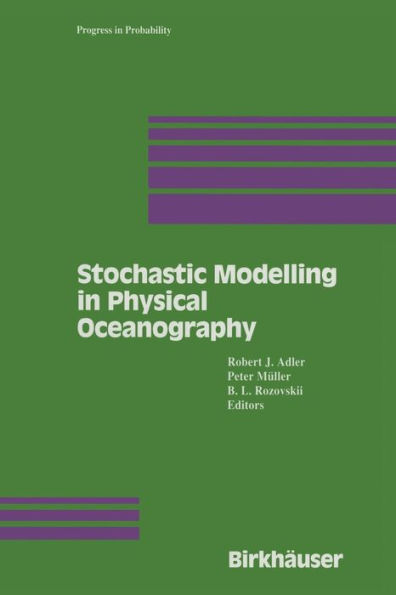Stochastic Modelling in Physical Oceanography
The study of the ocean is almost as old as the history of mankind itself. When the first seafarers set out in their primitive ships they had to understand, as best they could, tides and currents, eddies and vortices, for lack of understanding often led to loss of live. These primitive oceanographers were, of course, primarily statisticians. They collected what empirical data they could, and passed it down, ini tially by word of mouth, to their descendants. Data collection continued throughout the millenia, and although data bases became larger, more re liable, and better codified, it was not really until surprisingly recently that mankind began to try to understand the physics behind these data, and, shortly afterwards, to attempt to model it. The basic modelling tool of physical oceanography is, today, the partial differential equation. Somehow, we all 'know" that if only we could find the right set of equations, with the right initial and boundary conditions, then we could solve the mysteries of ocean dynamics once and for all.
1001366297
Stochastic Modelling in Physical Oceanography
The study of the ocean is almost as old as the history of mankind itself. When the first seafarers set out in their primitive ships they had to understand, as best they could, tides and currents, eddies and vortices, for lack of understanding often led to loss of live. These primitive oceanographers were, of course, primarily statisticians. They collected what empirical data they could, and passed it down, ini tially by word of mouth, to their descendants. Data collection continued throughout the millenia, and although data bases became larger, more re liable, and better codified, it was not really until surprisingly recently that mankind began to try to understand the physics behind these data, and, shortly afterwards, to attempt to model it. The basic modelling tool of physical oceanography is, today, the partial differential equation. Somehow, we all 'know" that if only we could find the right set of equations, with the right initial and boundary conditions, then we could solve the mysteries of ocean dynamics once and for all.
54.99
In Stock
5
1

Stochastic Modelling in Physical Oceanography
466
Stochastic Modelling in Physical Oceanography
466Paperback(Softcover reprint of the original 1st ed. 1996)
$54.99
54.99
In Stock

Product Details
| ISBN-13: | 9781461275336 |
|---|---|
| Publisher: | Birkhäuser Boston |
| Publication date: | 09/30/2011 |
| Series: | Progress in Probability , #39 |
| Edition description: | Softcover reprint of the original 1st ed. 1996 |
| Pages: | 466 |
| Product dimensions: | 6.10(w) x 9.25(h) x 0.04(d) |
From the B&N Reads Blog
